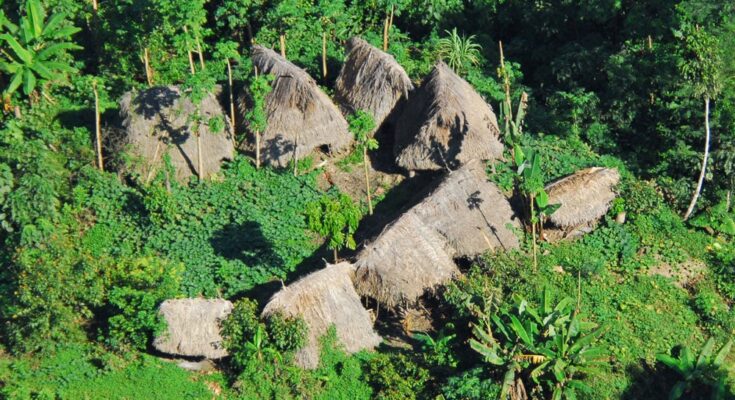Unique images of an uncontacted Indigenous tribe living in the Amazon in Peru, the Mashco Piro, have been published by Survival International.
The photos – published on Tuesday – show tribespeople gathered on the banks of a river near to where logging companies hold concessions. The remote tribe has been spotted emerging from the rainforest more and more in recent weeks searching for food, apparently trying to get away from the increasing presence of loggers, local Indigenous rights group FENAMAD told Reuters.
The Mashco Piro were photographed at the end of June on the banks of a river in the Madre de Dios region in southeast Peru near the border with Brazil, Survival International said as it released the photos.
A British human rights group warns that the Mashco Piro tribe face a "humanitarian disaster", as loggers encroach on their territory. Local campaigners say they have seen members of the tribe coming out of the rainforest in search of food. pic.twitter.com/o3uXAPtWtb
— Sky News (@SkyNews) July 17, 2024
“These incredible images show that a large number of isolated Mashco Piro live alone a few kilometers from where the loggers are about to start their operations,” Survival International director Caroline Pearce told Reuters.
Upwards of 50 Mascho Piro tribespeople appeared recently near a village of the Yine people called Monte Salvado. Another group of 17 were sighted at the nearby village of Puerto Nuevo, the NGO – which defends Indigenous rights – told Reuters.
The Mascho Piro, who live in an area found between two natural reserves in Madre de Dios, have very rarely appeared and do not communicate much with the Yine or anyone else, according to Survival International.
A handful of logging corporates have timber concessions within the territory where the Mashco Piro live. One of the companies, Canales Tahuamanu, has constructed over 200 kilometres of roads for its logging vehicles to take timber, Survival International reported.
The company is certified by the Forest Stewardship Council, which states that it has 53,000 hectares of forests in Madre de Dios to extract cedar and mahogany.
Where else have Peru’s Mashco Piro been spotted?
On June 28, the Peruvian government said that local residents had reported seeing Mashco Piro on the Las Piedras river, 150 kilometres from the city of Puerto Maldonado, the capital of Madre de Dios.
The tribe have also been spotted across the border in Brazil, Rosa Padilha of the Brazilian Catholic bishops’ Indigenous Missionary Council told Reuters.
“They flee from loggers on the Peruvian side,” she said. “At this time of the year they appear on the beaches to take tracajá (Amazon turtle) eggs. That’s when we find their footprints on the sand. They leave behind a lot of turtle shells.”
“They are a people with no peace, restless, because they are always on the run,” Padilha said.
In 1894, most of the Mashco Piro tribe was slaughtered by the private army of Carlos Fitzcarrald, in the upper Manú River area. Many Mashco-Piro natives were also enslaved by Fitzcarrald’s foreman, Carlos Scharff between 1897-1909 along the Purús and Madre de Dios Rivers.



